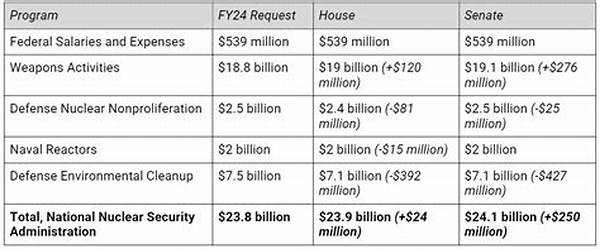The concept of national defense fiscal planning encompasses the strategic allocation and management of financial resources to ensure the security and defense readiness of a nation. This process involves assessing potential threats, identifying necessary military capabilities, and prioritizing defense objectives while maintaining a balanced budget. National defense fiscal planning is crucial in safeguarding a country’s sovereignty and achieving long-term security goals. Through prudent fiscal management, governments can effectively respond to evolving threats and invest in advanced technologies to bolster their defense capabilities. The following sections delve into different facets of national defense fiscal planning, providing a comprehensive understanding of this vital aspect of national security.
The Importance of Strategic Allocation in National Defense Fiscal Planning
In the realm of national defense fiscal planning, strategic allocation of resources plays a pivotal role in achieving a nation’s defense objectives. Effective fiscal planning ensures that limited financial resources are directed towards critical areas such as modernization of military equipment, training of personnel, and infrastructure development. The process involves a thorough analysis of potential threats and the capabilities required to counter them. By aligning fiscal priorities with strategic objectives, national defense fiscal planning enables nations to maintain a strong and responsive defense posture. This not only addresses immediate security concerns but also strengthens long-term defense capabilities. Hence, strategic allocation within national defense fiscal planning is indispensable for sustaining national security and ensuring efficient use of public funds.
Key Components of National Defense Fiscal Planning
1. Budget Formulation: National defense fiscal planning involves meticulous budget formulation to align defense spending with strategic priorities. This ensures that funds are allocated efficiently and effectively to meet security objectives.
2. Threat Assessment: A crucial aspect of national defense fiscal planning is threat assessment. By identifying potential risks, defense planners can allocate resources to build capabilities that address current and emerging threats.
3. Prioritization of Objectives: National defense fiscal planning necessitates prioritizing objectives to balance competing demands. Effective prioritization ensures that critical defense needs are met without compromising budgetary constraints.
4. Investment in Technology: An integral part of national defense fiscal planning is investment in cutting-edge technologies. This enhances a nation’s military capabilities and ensures that defense forces remain equipped to handle modern challenges.
5. Sustainability Considerations: National defense fiscal planning must consider the sustainability of defense spending. Balancing the defense budget with broader economic conditions is vital to maintain national financial health.
Challenges in National Defense Fiscal Planning
National defense fiscal planning faces several challenges that complicate the strategic allocation of resources. One major challenge is the unpredictability of geopolitical threats, which necessitates constant reassessment of defense priorities. Additionally, the rapid pace of technological advancements requires substantial and often unforeseen investments in research and development. Budget constraints further exacerbate these challenges, demanding tough decisions about which programs to fund. Governments must also contend with public scrutiny and the need for transparency in defense spending. Together, these challenges underscore the complexity of national defense fiscal planning, which demands careful balancing of immediate needs and long-term strategies.
Strategic Approaches to Enhance National Defense Fiscal Planning
1. Multi-year Budgeting: Implementing multi-year budgeting frameworks in national defense fiscal planning allows for better long-term allocation of resources and more consistent funding for critical defense programs.
2. Joint Service Collaboration: Fostering collaboration among different branches of the military enhances efficiency in national defense fiscal planning by reducing redundancy and leveraging shared resources.
3. Public-Private Partnerships: Engaging in public-private partnerships can be a strategic move in national defense fiscal planning, providing access to innovative technologies and cost-effective solutions.
4. Performance Metrics: Utilizing performance metrics in national defense fiscal planning ensures accountability and enables the assessment of program effectiveness, guiding future resource allocation decisions.
5. Scenario Planning: Incorporating scenario planning helps address uncertainties and prepare for potential crises, thereby strengthening the resilience of national defense fiscal planning.
6. Flexibility in Fund Allocation: National defense fiscal planning should incorporate flexibility to reallocate funds in response to shifting threat landscapes and emerging priorities, enhancing adaptability.
7. International Cooperation: Engaging in international defense cooperation can amplify resource efficiency in national defense fiscal planning, sharing the burden of collective security among allied nations.
8. Public Engagement: Transparent communication with the public regarding defense spending nurtures trust and support, facilitating smoother implementation of national defense fiscal planning initiatives.
9. Risk Management Strategies: Integrating risk management into national defense fiscal planning helps identify vulnerabilities and mitigate potential fiscal disruptions caused by unforeseen events.
10. Continuous Review: Regular review of defense spending programs ensures that national defense fiscal planning remains aligned with strategic goals and adapts to changing security environments.
Evaluating National Defense Fiscal Planning Outcomes
The efficacy of national defense fiscal planning can be gauged through comprehensive evaluation of outcomes relative to strategic goals. This analysis involves assessing the alignment of fiscal allocations with security priorities and reviewing the performance of funded programs. Furthermore, evaluating defense spending outcomes includes scrutinizing the efficiency of resource utilization and the extent to which objectives have been achieved. It is essential for governments to harness insights from these evaluations to inform future planning cycles. Stakeholders’ feedback, lessons learned, and adaptability to emerging threats should all be considered to continuously refine national defense fiscal planning strategies, ensuring optimized and sustainable security outcomes.
Conclusion
In conclusion, national defense fiscal planning is integral to ensuring the security and defense readiness of a nation. By strategically allocating resources to address immediate threats and long-term objectives, countries can maintain robust defense capabilities. As highlighted in this article, national defense fiscal planning involves numerous components, challenges, and strategic approaches. Effective planning ensures that defense spending aligns with strategic goals, while addressing budgetary constraints and embracing technological advancements. Evaluating the outcomes of fiscal planning allows for informed decision-making and continuous improvement. Ultimately, the goal of national defense fiscal planning is to protect national interests while ensuring efficient and sustainable use of public resources.





